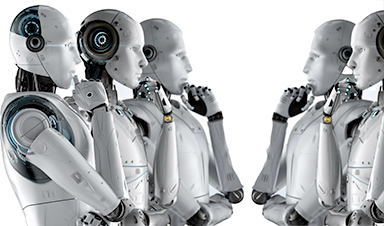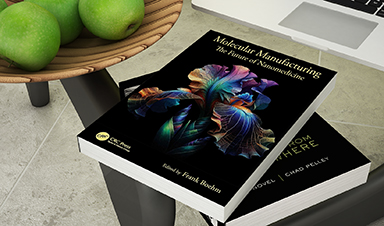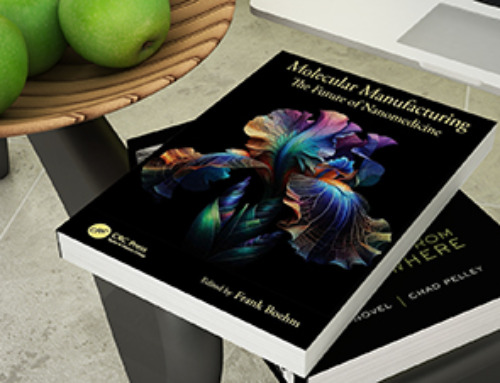Modern AI systems have fulfilled Turing's vision of machines that learn and converse like humans, but challenges remain. A new paper highlights concerns about energy consumption and societal inequality while calling for more robust AI testing to ensure ethical and sustainable progress.
A perspective published on November 13 in Intelligent Computing, a Science Partner Journal, argues that modern artificial intelligence systems have fulfilled Alan Turing's decades-old vision: machines capable of learning from experience and engaging in human-like conversations. Authored by Bernardo Gonçalves, a researcher affiliated with the University of São Paulo and the University of Cambridge, the paper examines the alignment between contemporary AI technologies and Turing's ideas, while highlighting key differences.
The paper emphasizes how today's transformer-based systems—despite their significant energy demands—contrast with Turing's concept of machines developing intelligence naturally, akin to the learning process of human children. Gonçalves notes that transformers, which power current generative AI models, provide what Turing described as "adequate proof" of machine intelligence. Leveraging attention mechanisms and large-scale learning, these systems now excel in tasks traditionally associated with human cognition, such as generating coherent text, solving complex problems, and engaging in discussions about abstract concepts.
The Evolution of AI and Turing's Influence
"Without resorting to preprogramming or special tricks, their intelligence grows as they learn from experience, and to ordinary people, they can appear human-like in conversation," writes Gonçalves. "This means that they can pass the Turing test and that we are now living in one of many possible Turing futures where machines can pass for what they are not."

This achievement traces back to Turing's 1950 concept of the "imitation game," in which a machine would attempt to mimic a human in a remote conversation, deceiving a non-expert judge. The test became a cornerstone of artificial intelligence research, with early AI pioneers John McCarthy and Claude Shannon considering it the "Turing definition of thinking" and Turing's "strong criterion." Popular culture, too, undeniably reflects Turing's influence: the HAL-9000 computer in the Stanley Kubrick film 2001: A Space Odyssey famously passed the Turing test with ease.
However, the paper underscores that Turing's ultimate goal was not simply to create machines that could trick humans into thinking they were intelligent. Instead, he envisioned "child machines" modeled on the natural development of the human brain—systems that would grow and learn over time, ultimately becoming powerful enough to have a meaningful impact on society and the natural world.
Challenges in Modern AI Development
The paper highlights concerns about current AI development. While Turing advocated for energy-efficient systems inspired by the natural development of the human brain, today's AI systems consume massive amounts of computing power, raising sustainability concerns. Additionally, the paper draws attention to Turing's ahead-of-his-time societal warnings. He cautioned that automation should affect all levels of society equally, not just displace lower-wage workers while benefiting only a small group of technology owners—an issue that resonates strongly with current debates about AI's impact on employment and social inequality.
Looking ahead, the paper calls for Turing-like AI testing that would introduce machine adversaries and statistical protocols to address emerging challenges such as data contamination and poisoning. These more rigorous evaluation methods will ensure AI systems are tested in ways that reflect real-world complexities, aligning with Turing's vision of sustainable and ethically guided machine intelligence.
Reference: "Passed the Turing Test: Living in Turing Futures" by Bernardo Gonçalves, 13 November 2024, Intelligent Computing.
DOI: 10.34133/icomputing.0102
News
Two New Books From Frank Boehm, NA Founder – To be Released Dec. 2025
Molecular Manufacturing: The Future of Nanomedicine This book explores the revolutionary potential of atomically precise manufacturing technologies to transform global healthcare, as well as practically every other sector across society. This forward-thinking volume examines [...]
What could the future of nanoscience look like?
Society has a lot to thank for nanoscience. From improved health monitoring to reducing the size of electronics, scientists’ ability to delve deeper and better understand chemistry at the nanoscale has opened up numerous [...]
Scientists Melt Cancer’s Hidden “Power Hubs” and Stop Tumor Growth
Researchers discovered that in a rare kidney cancer, RNA builds droplet-like hubs that act as growth control centers inside tumor cells. By engineering a molecular switch to dissolve these hubs, they were able to halt cancer [...]
Platelet-inspired nanoparticles could improve treatment of inflammatory diseases
Scientists have developed platelet-inspired nanoparticles that deliver anti-inflammatory drugs directly to brain-computer interface implants, doubling their effectiveness. Scientists have found a way to improve the performance of brain-computer interface (BCI) electrodes by delivering anti-inflammatory drugs directly [...]
After 150 years, a new chapter in cancer therapy is finally beginning
For decades, researchers have been looking for ways to destroy cancer cells in a targeted manner without further weakening the body. But for many patients whose immune system is severely impaired by chemotherapy or radiation, [...]
Older chemical libraries show promise for fighting resistant strains of COVID-19 virus
SARS‑CoV‑2, the virus that causes COVID-19, continues to mutate, with some newer strains becoming less responsive to current antiviral treatments like Paxlovid. Now, University of California San Diego scientists and an international team of [...]
Lower doses of immunotherapy for skin cancer give better results, study suggests
According to a new study, lower doses of approved immunotherapy for malignant melanoma can give better results against tumors, while reducing side effects. This is reported by researchers at Karolinska Institutet in the Journal of the National [...]
Researchers highlight five pathways through which microplastics can harm the brain
Microplastics could be fueling neurodegenerative diseases like Alzheimer's and Parkinson's, with a new study highlighting five ways microplastics can trigger inflammation and damage in the brain. More than 57 million people live with dementia, [...]
Tiny Metal Nanodots Obliterate Cancer Cells While Largely Sparing Healthy Tissue
Scientists have developed tiny metal-oxide particles that push cancer cells past their stress limits while sparing healthy tissue. An international team led by RMIT University has developed tiny particles called nanodots, crafted from a metallic compound, [...]
Gold Nanoclusters Could Supercharge Quantum Computers
Researchers found that gold “super atoms” can behave like the atoms in top-tier quantum systems—only far easier to scale. These tiny clusters can be customized at the molecular level, offering a powerful, tunable foundation [...]
A single shot of HPV vaccine may be enough to fight cervical cancer, study finds
WASHINGTON -- A single HPV vaccination appears just as effective as two doses at preventing the viral infection that causes cervical cancer, researchers reported Wednesday. HPV, or human papillomavirus, is very common and spread [...]
New technique overcomes technological barrier in 3D brain imaging
Scientists at the Swiss Light Source SLS have succeeded in mapping a piece of brain tissue in 3D at unprecedented resolution using X-rays, non-destructively. The breakthrough overcomes a long-standing technological barrier that had limited [...]
Scientists Uncover Hidden Blood Pattern in Long COVID
Researchers found persistent microclot and NET structures in Long COVID blood that may explain long-lasting symptoms. Researchers examining Long COVID have identified a structural connection between circulating microclots and neutrophil extracellular traps (NETs). The [...]
This Cellular Trick Helps Cancer Spread, but Could Also Stop It
Groups of normal cbiells can sense far into their surroundings, helping explain cancer cell migration. Understanding this ability could lead to new ways to limit tumor spread. The tale of the princess and the [...]
New mRNA therapy targets drug-resistant pneumonia
Bacteria that multiply on surfaces are a major headache in health care when they gain a foothold on, for example, implants or in catheters. Researchers at Chalmers University of Technology in Sweden have found [...]
Current Heart Health Guidelines Are Failing To Catch a Deadly Genetic Killer
New research reveals that standard screening misses most people with a common inherited cholesterol disorder. A Mayo Clinic study reports that current genetic screening guidelines overlook most people who have familial hypercholesterolemia, an inherited disorder that [...]





















